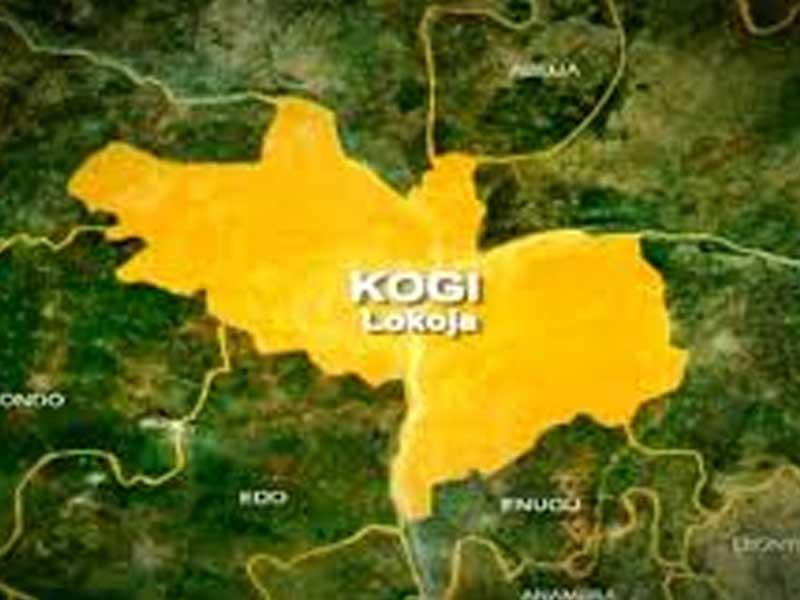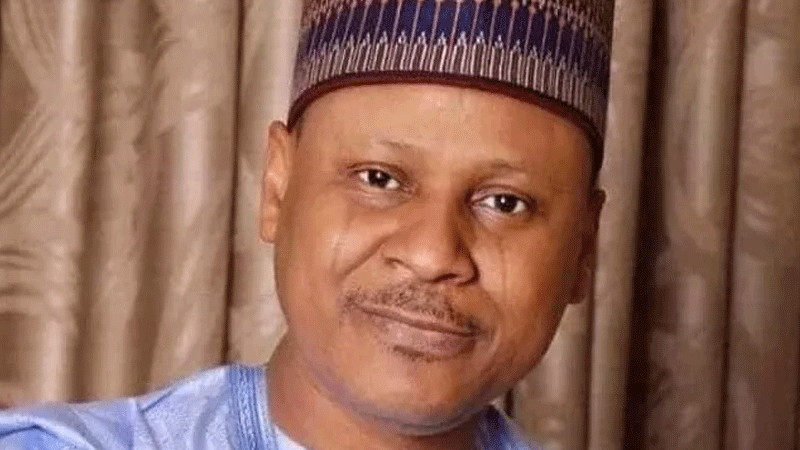Following a civil protest spearheaded by respected journalist, Ms Kadaria Ahmed, over the violence and lawlessness that now define Zamfara, the federal government last weekend responded by suspending all mining operations in the state. There is a “glaring nexus between the activities of armed bandits and illicit miners, with both mutually re-enforcing each other” said the acting Inspector General of Police, Mr Mohammed Adamu as he launched “Operation Puff Adder” against the bandits. But as conventional wisdom teaches, you don’t continue to do the same thing while expecting different outcomes.
In a media briefing on 30th November last year, the then Force Public Relations Officer, Ag. DCP Jimoh Moshood narrated how the police repelled attacks by bandits operating from the Mahanga Forest in Birnin Mogaji local government of Zamfara state, killing 104 and destroying 50 of their hideouts. Three weeks before that incident, Moshood had similarly claimed that a “Joint Intervention Team of about 1000 police personnel comprised of seven mobile police force units headed by an Assistant Commissioner of Police, counter terrorism unit (CTU), federal special anti-robbery squad (FSARS), anti-bomb (EOD) squad, and conventional policemen” had been deployed to Zamfara “to rout-out, arrest and prosecute armed bandits, vicious kidnap for ransom and cattle rustling gangs operating in some parts of the state.”
Leading the reinforcement was a DIG who was deployed “to be the overall commander of the Police Joint Intervention Force and add new impetus to the operations. The DIG has already arrived in Zamfara state overnight with hundreds of police special forces personnel, counter terrorism units (CTU), additional police mobile force (PMF), federal SARS personnel, three surveillance patrol helicopters and crew members to coordinate the operation to completely rout-out all armed bandits from Zamfara and other contiguous states” said Moshood in November last year.
If these forces were deployed less than five months ago, how can the bandits still be operating freely? What does this say about the nature of the security challenge we are facing? On Tuesday, the Minister of Defence, Mansur Dan Ali claimed that some highly placed Nigerians, including traditional rulers, “were identified as helping the bandits with intelligence to perpetuate their nefarious actions or to compromise military operations.” If that is true, we have a very serious problem on our hands.
While the widening ungoverned spaces in the country should be of concern to all critical stakeholders, it is commendable that the security challenge in the Northwest is finally receiving the attention it deserves. It has been under the radar for a while essentially because it doesn’t fit into the familiar fault lines of ethnicity and religion. Yet, so desperate is the situation that a few months ago, the Chairman of Zamfara Council of Chiefs and Emir of Anka, Alhaji Attahiru Ahmad, called on the federal government to license self-help by granting them permission to begin to carry guns to defend themselves against the bandits tormenting their domains.
Before we go further, it is important to examine the state of affairs in Zamfara that has since 1999 been woefully governed by a succession of irresponsible leaders, beginning with Ahmed Sani Yerima (now senator) who used the Sharia subterfuge to gain and retain power for eight years between 1999 and 2007. Governor Abdulazees Yari, who in 2017 reacted to the outbreak of Cerebrospinal Meningitis in his state by saying, “There is no way fornication will be so rampant and God will not send a disease that cannot be cured”, has been the worst of them all. He has spent the past eight years destroying practically all social sectors in the state due to criminal neglect.
In her interview last week, Kadaria described Yari as “the most useless governor” in Nigeria today. Hardly anybody who has visited Zamfara in recent years will disagree with that characterization. In December 2016, the Executive Chairman, Zamfara State Universal Basic Education Board (ZSUBEB), Hon Murtala Adamu Jangebe, lamented that no fewer than 300 public primary schools in the state were manned by a single teacher each. Many more schools in remote rural communities, he added, have no teacher at all. It therefore came as no surprise when the federal ministry of education disclosed that only 28 candidates from Zamfara State sat for the 2018 National Common Entrance Examination into the 104 Federal Government Colleges in the country!
TheCable, an online publication, last year did an in-depth report on the collapse of education in Zamfara state, using the 2012 report of a committee chaired by Professor Tukur Adamu, as a peg. Yari established the committee upon assuming office in 2011, but did nothing with the report as the education sector collapsed under his watch. “The committee found out that some of the public schools exist only in name because they have no single structure. Some operate in makeshift structures, mosques, Qur’anic schools and under trees,” TheCable wrote in the report where a head teacher in Moriki groaned: “I am the head teacher, I am the assistant head teacher, I am the mathematics, English and social studies teacher. Help me beg the government to give me teachers.”
But if the state of education in Zamfara is poor, what then do we say about that of the health sector? According to the Minister of Health, Prof. Isaac Adewole, there are only 23 medical doctors for the 24 hospitals owned by the Zamfara state government. And we are talking of a state with a population of over three million people, where hundreds of children die yearly by ingesting lead poison as a result of illegal mining.
In November 2012, Médecins sans Frontières (MSF)/Doctors Without Borders warned that time was running out to solve the Zamfara crisis. “More than two and a half years after the lead poisoning disaster was first discovered, hundreds of children are still awaiting critical medical treatment. MSF is ready and willing to treat these children, but cannot do so until their homes have been environmentally remediated,” said Michael White, the then Acting Head of MSF Mission, Nigeria at a period no fewer than 2,000 children died after being poisoned by dust released by gold miners in the course of breaking open rocks near their homes.
The MSF humanitarian mission which started in 2010 and included remediation of affected villages, medical treatment to the most vulnerable victims and the implementation of safer mining practices was a collaboration with TerraGraphics, a US-based engineering firm. But due to inadequate financing, the clean-up was eventually abandoned and the company moved out as more and more children in Zamfara continue to die. Meanwhile, Yari spends most of his time outside Nigeria. When he is in the country, he stays put in Abuja as chair of the Nigeria Governors Forum (NGF).
Kadaria is right to put Yari on the spot. Governors must bear responsibility. The absence of governance in too many of our states has resulted in substandard living conditions. The Zamfara crisis brings together all the issues that account for insecurity in the country. But the abysmal quality of leadership by Yari is on a new level. The issue of ‘fit and proper persons’ to occupy public office is therefore now a critical burden of this democracy. But on security, the question remains: Where does individual state responsibility end and the ultimate federal sovereign authority begin?
Unfortunately, I do not believe that the current approach will provide any lasting solution. I read somewhere that the Chief of Army Staff may temporarily relocate to Zamfara. That may be good for optics but it does not address the challenge at hand. At best, the bandits may withdraw for a while or relocate to neighbouring states but they will certainly come back. In any case, this is a North-west challenge that goes beyond Zamfara. On Monday, no fewer than 30 persons were killed in a clash between vigilantes and bandits in Tsamiyar Jino village in Kankara local government of Katsina state. At about the same time, scores of gunmen invaded Angwan Aku community in Kajuru local government of Kaduna state, killing about 21 persons with several others wounded. It is instructive that there are no mining activities in these two areas that are practically being controlled by bandits.
From “A society governed by rustlers” to “Let’s kill all their men” to “The Zamfara Killing Fields”, banditry in the North-west is an issue I have engaged on this page several times in the past five years. I have also warned that with villages being deserted in the face of what looks like organized crime, there are serious threats to our national economy and security. A respected retired federal permanent secretary, Dr. Hakeem Baba Ahmed, once put the situation in perspective: “For almost 400 square kilometers, from Abuja to Kaduna, Zaria and Birnin Gwari, there is hardly any farm with cattle [left]. It is the same in most parts of Katsina and Zamfara states. The backbone of the northern economy is farming and husbandry. Cattle breeding and processing was a major business in these areas. Not anymore. Slowly but surely, the heart of the northern economy is being snuffed out. We cannot keep cattle on our farms. Large scale farming is becoming less and less attractive. A huge swathe of the north is now bandit territory. Most of us know where our cattle are, but we cannot retrieve them. Abducted women and young girls hardly ever return…”
Aside the immediate response of showing some muscle, as has been done numerous times in the past, there is a need to develop short, medium and long term strategies to a challenge that goes beyond Zamfara to the entire North-west zone. As it is clear with the management of the Boko Haram insurgency in the North-east, this tragedy points to poor use of pre-emptive intelligence and a lack of any coherent strategy. There is a forest straddling Zamfara, Kaduna and Katsina that provides hideouts for cattle rustlers and kidnappers. Not only is it important to scale up security presence along that axis, we also need a comprehensive approach, rather than episodic ones whenever there is a surge in attacks. For that to happen, the national security architecture must be redefined in a manner that takes into account the peculiarities of crises in different parts of the country.
The authorities must also try to understand the origin and increasing growth of this lawlessness. For instance, the violence in Zamfara started late in 2011 in Lingyado village of Dansadau district but it was in 2012 that the situation went out of control when 52 persons, mostly Vigilantes mobilized to protect the community, were brutally murdered in Zurmi, sending fears to many of the residents who fled with their families and cattle. On 7th April, 2014, Yar Galadima village in Maru Local Government witnessed a mass burial of 112 persons killed in a single attack while in 2015, no fewer than 48 people were killed after the marauders entered a village called Kizara before dawn, riding on motorbikes. In desperation, parallel vigilante groups known as “Yan Banga” and “Yan Sa Kai” have emerged in various local communities with their members identifying and arresting alleged criminals and executing them without recourse to law courts. That was what engendered a spiral of revenge killings, mostly by bandits who regroup to launch counter attacks.
It is clear from the foregoing that a discernible gangster ethos now defines living and livelihoods in Zamfara state with the crisis spreading to Katsina, Kaduna and Sokoto as sundry cartels of criminals carve out empires for themselves. That is why the pledge by the Zamfara state government to recruit 1,700 local charmers in addition to the 8,500 members of Civilian Joint Task Force, (CJTF) offers no practical solution. But my main concern is that when security is outsourced to forces over which the authorities have no control, it is the larger society that is endangered.
• You can follow me on my Twitter handle, @Olusegunverdict and on www.olusegunadeniyi.com





